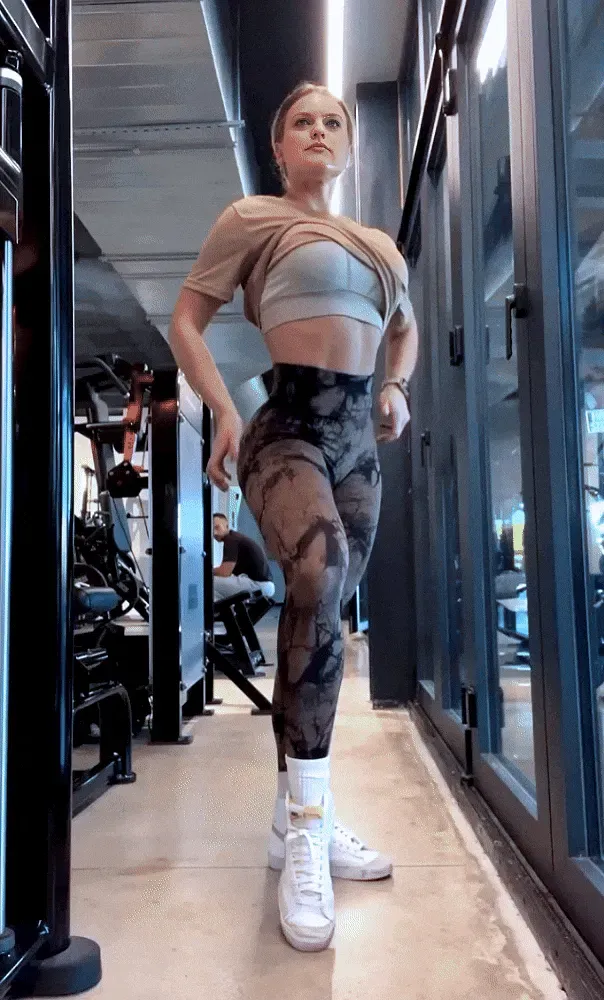Table of Contents
Thinking about bringing the gym home without emptying your wallet? The Everyday Essentials BF-RS80, often just called the home gym rs80, pops up frequently for folks looking for an affordable workout setup. It promises a lot in a small package, designed to fit into spare corners and provide a full-body workout. But does this budget-friendly machine actually deliver, or is it more trouble than it's worth?
What is the Everyday Essentials Home Gym RS80 Anyway?
What is the Everyday Essentials Home Gym RS80 Anyway?
Alright, so you've seen it pop up online, maybe on eBay or a similar site: the Everyday Essentials BF-RS80. Most people just call it the home gym rs80. Think of it as a compact, all-in-one weight machine designed for tight spaces and tighter budgets. It’s built around a weight stack – usually vinyl plates, nothing fancy or high-end – connected to a system of pulleys and cables. The idea is to offer a range of exercises like lat pulldowns, chest press, leg extensions, and bicep curls, all from one footprint. It's definitely aimed at the beginner or intermediate user who wants to get some resistance training done without needing a separate bench, barbell, and a bunch of dumbbells taking over their living room.
Setting Up the Home Gym RS80: Expectation vs. Reality
Setting Up the Home Gym RS80: Expectation vs. Reality
Unboxing the Beast and Meeting the Manual
Alright, so you got the delivery. Probably a few heavy boxes landing with a thud on your doorstep. Opening them up feels a bit like Christmas morning, if Christmas morning involved industrial-grade cardboard and a distinct smell of fresh metal and plastic. The expectation? Pull out clear instructions, neatly bagged bolts, and parts that slot together like LEGOs. The reality? You're faced with a sea of metal tubes, cables, pulleys, a weight stack that looks deceptively simple, and a plastic bag overflowing with more nuts, bolts, washers, and screws than you thought existed. Then you find the manual. It's often less a step-by-step guide and more a series of diagrams that require a level of spatial reasoning usually reserved for rocket scientists or competitive origami artists. You spend the first hour just trying to identify piece 'A' from piece 'B' and figure out which direction is 'up'.
Wrenching it Together: A Test of Patience (and Friendship)
Once you've deciphered the hieroglyphs passing as instructions, the actual assembly begins. This is where you'll discover if your relationship can withstand the pressure of holding a wobbly frame section while someone else tries to align a bolt through three different holes simultaneously. The included tools are usually flimsy stamped metal wrenches that are better suited for opening stubborn beer bottles than tightening structural bolts. You'll definitely want your own metric socket set or adjustable wrench handy. Cable routing can feel like threading a needle while blindfolded, and attaching the weight plates often involves careful maneuvering to avoid pinching fingers. It's not impossible, mind you, but plan for a solid few hours, maybe even an afternoon, and definitely enlist a helper if you value your sanity and want to finish before the next lunar cycle.
Conquering the Home Gym RS80 Setup:
- Gather Your Own Tools: Ditch the included wrenches. Get a decent adjustable wrench or a metric socket set. Pliers are also a lifesaver for cable wrangling.
- Find a Buddy: Seriously, some steps require two sets of hands. Bribe a friend with pizza.
- Sort the Hardware: Before you start, sort all the bolts, washers, and nuts by size and type. Label them if you have to. It saves endless frustration later.
- Study the Diagrams (Carefully): Spend time understanding the overall structure before you start bolting things together. Don't assume the first step is obvious.
- Don't Overtighten (Yet): Hand-tighten bolts initially, especially when assembling the main frame. You might need some wiggle room to align everything before the final tightening.
Working Out on the Home Gym RS80: The Good, The Bad, and The Cable Snap
Working Out on the Home Gym RS80: The Good, The Bad, and The Cable Snap
Getting Started and the Basic Moves
so you've wrestled the thing together. Now comes the part where you actually lift something. The good news is, the home gym rs80 *does* let you hit the major muscle groups. You've got your lat pulldown for back, chest press for... well, chest, a leg extension/curl station, and usually some kind of low pulley for rows and curls. For someone just starting out, or who simply wants to maintain some basic strength without leaving the house, it covers the fundamentals. The weight stack, while vinyl and not exactly calibrated with scientific precision, provides resistance. You can definitely get a pump doing a circuit of the available exercises. It's a step up from just bodyweight if you need external resistance for certain movements.
Hitting the Limits: Adjustability and Smoothness
Here's where the budget nature of the home gym rs80 starts to show. Adjustability is often limited. The seat might have one or two height options, maybe not perfectly suited to your height. Changing between exercises, like switching from lat pulldowns to the chest press, can be clunky, sometimes requiring you to swap pins or re-route cables. The movement itself can feel less than buttery smooth. Budget pulleys and cables can stick or feel jerky, especially under heavier loads. This isn't the kind of machine where you'll feel a perfectly isolated, fluid contraction. It's more functional resistance than refined biomechanics. And if you're taller or have longer limbs, you might find the range of motion on certain exercises feels restricted.
Things to Note While Lifting:
- Range of Motion: Can feel limited on some exercises depending on your size.
- Cable Smoothness: Expect some friction or jerkiness, especially under load.
- Transition Time: Switching exercises isn't always quick or seamless.
- Weight Increments: Jumps between plates might feel too big or too small for progressive overload.
- Noise Level: It's not silent; you'll hear the weights clanking.
The Elephant in the Room: Durability and the Dreaded Cable
Now, about that cable snap. It's a common complaint you'll hear about lower-cost home gyms, and the home gym rs80 is no exception. These aren't aircraft-grade cables built for commercial gym abuse. They're designed for light to moderate use. Pulleys can also wear out. While some users report years of trouble-free workouts, others, particularly those pushing heavier weights or using the machine frequently, have seen cables fray or snap surprisingly quickly. It’s a real risk. Yes, warranties exist, and some sellers are good about replacements, but being mid-set when a cable gives out is disruptive, potentially unsafe, and frankly, annoying. This machine isn't built for heavy powerlifters or intense, daily grind sessions.
Real User Takes on the Everyday Essentials Home Gym RS80 Value
Real User Takes on the Everyday Essentials Home Gym RS80 Value
What People Really Think After Buying One
So, what's the word from the folks who actually dropped some cash on the home gym rs80 and wrestled it into their spare bedroom or garage corner? The general vibe you get from reviews and comments is that for the price, it's a decent entry point into home strength training. People often praise its value, noting you get a multi-station machine for significantly less than higher-end models. They appreciate the compact footprint, which is a big win for apartment dwellers or anyone short on space. For beginners or those needing a simple, convenient way to add resistance work to their routine, the home gym rs80 seems to hit a sweet spot, particularly for individuals or small families just starting out.
Should You Buy the Home Gym RS80? Weighing the Pros and Cons
Should You Buy the Home Gym RS80? Weighing the Pros and Cons
The Case For: Why the Home Gym RS80 Might Fit Your Needs
Look, let's be real. Not everyone has the budget or the space for a commercial-grade setup. If you're just starting out, living in a smaller place, or simply want a convenient option for some basic resistance work without shelling out for a gym membership, the home gym rs80 makes a compelling case purely on price and footprint. It’s significantly cheaper than most multi-station machines on the market. It gives you the fundamental movements – push, pull, lower body – in one relatively compact unit. You can roll out of bed and be lifting in minutes, avoiding commute time and crowded gyms. For many, that convenience factor is huge, especially if they're intimidated by traditional gyms or have limited time. It's a functional piece of equipment that gets the job done for foundational strength building.
The Case Against: What You're Giving Up for the Price Tag
Now, for the flip side. That low price comes with compromises, and pretending otherwise is just silly. As we've touched on, the assembly can be a headache worthy of an aspirin factory. The build quality, while adequate for light use, isn't designed for heavy loads or daily punishment. The limited adjustability means finding that perfect fit for exercises might be impossible, potentially impacting your form and results. And yes, the cable issue is a legitimate concern; it’s not a matter of *if* a cable might wear out, but *when*, especially if you push the weight. This machine isn't built for advanced lifters looking for precision, smooth movement, or high weight capacity. If you're serious about progressive overload beyond moderate levels, you'll likely outgrow the home gym rs80 fairly quickly.
So, is the home gym rs80 a miracle machine or a glorified coat rack?
- Pros: Affordable price point, compact size, covers basic exercises, convenient for home use.
- Cons: Difficult assembly, limited adjustability, potential durability issues (especially cables), not for heavy lifting, movement can be jerky.
Who is the Home Gym RS80 Actually For?
So, who should actually consider buying this thing? If you're a complete beginner dipping your toes into strength training, if you have very limited space and budget, or if you just need a simple machine for occasional light workouts to supplement other activities, the home gym rs80 could be a reasonable fit. It’s a stepping stone, not a destination. Think of it as a functional tool to get started, understand basic movements, and build a foundation. If you're already lifting decent weight, have specific training goals requiring precise movements or heavy loads, or value buttery-smooth operation and robust durability, you should absolutely save your money and look elsewhere. It's a budget option, and it performs like one – sometimes surprisingly well for the cost, sometimes reminding you exactly why it was so cheap.
The Final Word on the Home Gym RS80
So, where does that leave us with the home gym rs80? It's not a perfect machine, that much is clear. The setup might test your patience, the adjustability isn't going to blow your mind, and yes, there are whispers of cables giving up the ghost. But look, for the price tag it carries, it offers a functional way to get some resistance training done at home, especially if space is tight. It's probably not the machine for serious bodybuilders or powerlifters, but for someone just starting out, looking to maintain some fitness, or needing a super budget-friendly option, it might just fit the bill. Just go in with realistic expectations, maybe keep the seller's warranty info handy, and don't expect commercial gym quality. It's a home gym, sure, but it's the home gym you get when you're watching your pennies, not when you've just won the lottery.